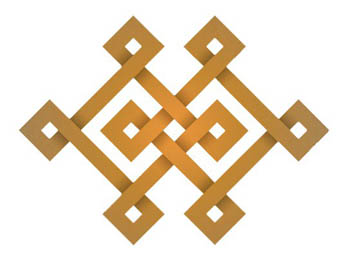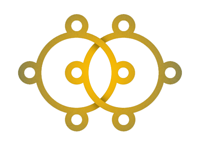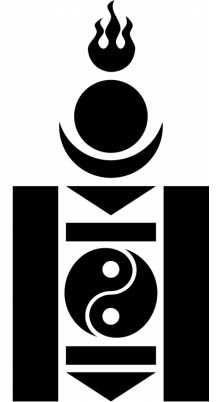

The traveler arriving in Mongolia is quickly struck by the abundance of geometric symbols, some designs being found in the achitecture, on clothing, in yurts and everyday objects.
These symbols often have a strong religious significance, and are mostly from Tibetan Buddhism.
Buddhism distinguishes indeed eight "auspicious symbols" which are deemed to bring good luck.
In Mongolia, you will mostly see the knot, the lotus, the wheel, and the swastika, a symbol particularly popular throughout Asia and which has no negative connotation as it has in Europe since World War II.
It symbolizes the infinite love and interdependence of all things.

Symbol of love and honesty.

Symbol of peace.

The Soyombo is the name of a Mongolian script created by Zanabazar in 1686.
One of his characters became the symbol of the Mongolian nation and is on the national flag of Mongolia.
Different meanings are proposed for its components, some related directly to the Mongolian people, others more oriented to Buddhist spiritual path.
